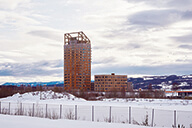This software startup is focused on bringing efficiency to the industry, and on connecting offsite manufacturers and builders.
- Modulize’s clients include manufacturers of panels, timber frames and other 2D elements, but they also serve some volumetric modular companies.
- Their software uses AI to automate much of the process and can also panelize a building model.
- The company is creating an online marketplace where builders can post projects and offsite manufacturers can bid on them.
Founded in 2020, Norway-based Modulize is a software company that hopes to become the definitive operating system for offsite construction. The software focuses on quantity takeoff, cost estimation and bidding, and also handles the procurement of prefabricated elements.
Modulize has made inroads into the European market and is currently targeting the US market.
Founders Olav Ljosland, Lucas Carstens and Håkon Kalbakk joined forces while at Antler, a global startup generator. The three men were focused on finding a way to reduce waste on construction projects, which led them to offsite, or factory-built housing.
Their zeal for offsite construction stems from the belief that it can greatly reduce waste, reduce costs and minimize labor shortages without sacrificing architectural quality or character. Currently, they focus on 2D elements — panelized walls, roof trusses and joists, mainly timber and wood-based — but are exploring 3D volumetric, mass timber, steel and concrete.
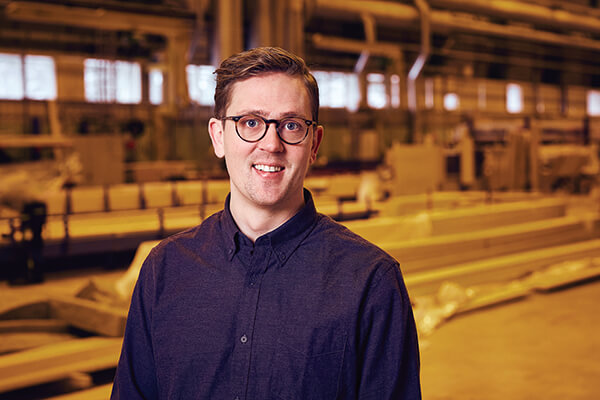
Courtesy of Ringsaker Vegg- og Takelementer
An Inefficient Market
Modulize’s founders recognized that this method of construction has challenges. The growing market is fragmented, has few standards and the professionals involved in it aren’t well connected.
After speaking with hundreds of European manufacturers it became clear that there were bottlenecks in the areas of costing and bidding, engineering and project management. “Manufacturers spend many hours bidding for projects they don’t win,” says Kalbakk. “That is why we are automating parts of this process with our software.”
They determined that the industry needs more standardization, as well as more information between disciplines. Architects, developers and contractors are unaware of the advantages that factory building offers, and many don’t know where to start.
Ultimately the team came up with a tool that does automatic takeoffs from PDFs, and includes a cost configurator and bid generator. They are also building a two-sided marketplace where contractors can put projects out to bid and manufacturers can bid on them.
Of course, Modulize is not the only company trying to address these challenges. Other companies doing similar work include Modulous and Copia Automation. What makes the Modulize product different is that their software is dedicated to the offsite market.
While Modulize has many of the same features as other software programs, it uses AI and computer vision to automate processes and assist users. Kalbakk gives an example: “Say you start by drawing a wall. Our system will automatically suggest how to draw the rest of the building.”
The software also has the ability to panelize a building model, and to calculate the cost of a bill of materials.
It can also optimize projects. For example, if a contractor submits a BIM file, “we will tell them which parts can be built in a factory and which [manufacturers] we recommend that they work with,” explains Kalbakk.
He adds, “We aim to convince contractors not yet using off-site to a large degree to put projects on Modulize and to consider using manufacturers from our pool. Once a contractor puts a project on the platform, relevant manufacturers will bid for the project, making it more likely that the contractors will choose to have more of the project built off-site. “We are leveraging an extensive network of manufacturers.”
Although they are looking to expand into North America, most current clients are in the UK and in Nordic countries. Their clients include Rob Roy Homes in Scotland and Ringsaker Vegg-og Takelementer AS (RVT) of Norway.

Courtesy of Rob Roy Homes
On-demand Accuracy
Located in Central Scotland and serving the entire UK, Rob Roy Homes has been designing and manufacturing timber-frame homes since 1992. Most of the company’s clients are self-build, residential customers and small residential developers, although they have also built educational facilities and small industrial units.
They help customers through the entire process, from finding an architect through construction. They prefer to get involved as early as possible so they can identify structural implications that may impact the budget and suggest alternatives.
Rob Roy Homes began using Modulize in the summer of 2022. They had been doing takeoffs by hand and were looking for a digital tool that would save data to a server or to the cloud. They had tried another estimating program, but didn’t care for the interface. They wanted the information to be accessible from the office or the field.
The team appreciates that Modulize lets them work online. “It makes us flexible,” says Paul Caudrey, a Commercial Manager with Rob Roy Homes. “That became more necessary during COVID-19 when people were working from home.”
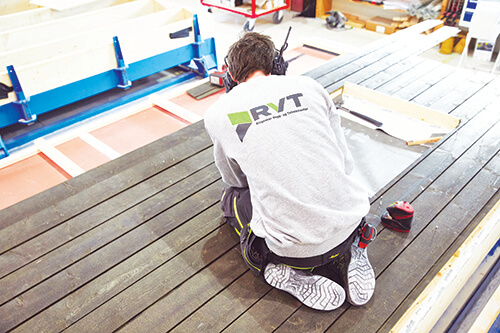
Courtesy of Ringsaker Vegg- og Takelementer
After a training session with Modulize, Rob Roy Homes employees quickly picked up the software and integrated it into their workflow. Caudrey says that the transition was simple because the system is user-friendly and easy to use. For instance, it saves time by automatically selecting external wall and floor areas. Takeoffs are based on the specific panels that Rob Roy Homes manufactures.
Caudrey says that Modulize’s accuracy, and the fact that his team can check historical data and quickly make price comparisons from anywhere, has led to much more accurate estimates.
One drawback he notes is that the software doesn’t interact with Excel. He hopes this can be remedied in the future.
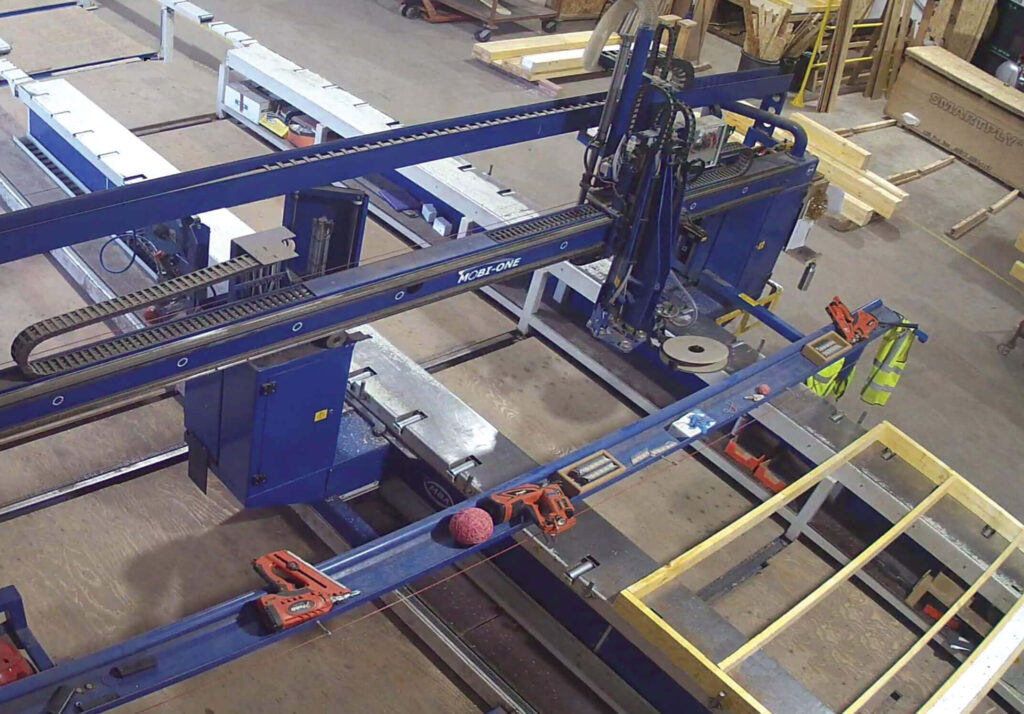
Courtesy of Rob Roy Homes
Faster Estimates
Founded in 2001, Norway-based Ringsaker Vegg-og Takelementer AS builds wooden roofs and façade elements. It also does installations.
In 2022, the company produced approximately 65,000 square meters of product. These were used on a variety of construction projects, including schools, hospitals, office buildings, student dormitories and large apartment buildings.
Although the company worked with BIM models, before adopting Modulize they did mostly manual takeoffs, according to RVT CEO Trond Sørlien Barli. He says that it took half a day to secure accurate measurements on a medium-sized project, but that Modulize has cut that time in half.
Barli has been impressed with how Modulize operates: “Everyone says their software is intuitive and easy to use, but Modulize really is.” The team was able to confidently use the software after a training session lasting only a couple of hours.
“Modulize helps us be more accurate, which customers appreciate,” says Barli. It saves time and money, and because it enables the team to work more quickly, they can respond to more potential jobs.
Barli says many prefab jobs in Norway are not planned that way at the beginning. One suggestion he has for improving Modulize would be to tag specific parts of the project to show the savings that prefabrication offers.
He hopes that Modulize will get more building owners on board with this way of building. “I think [it can potentially] help building owners think prefab in the beginning and bring attention to prefab methods.”
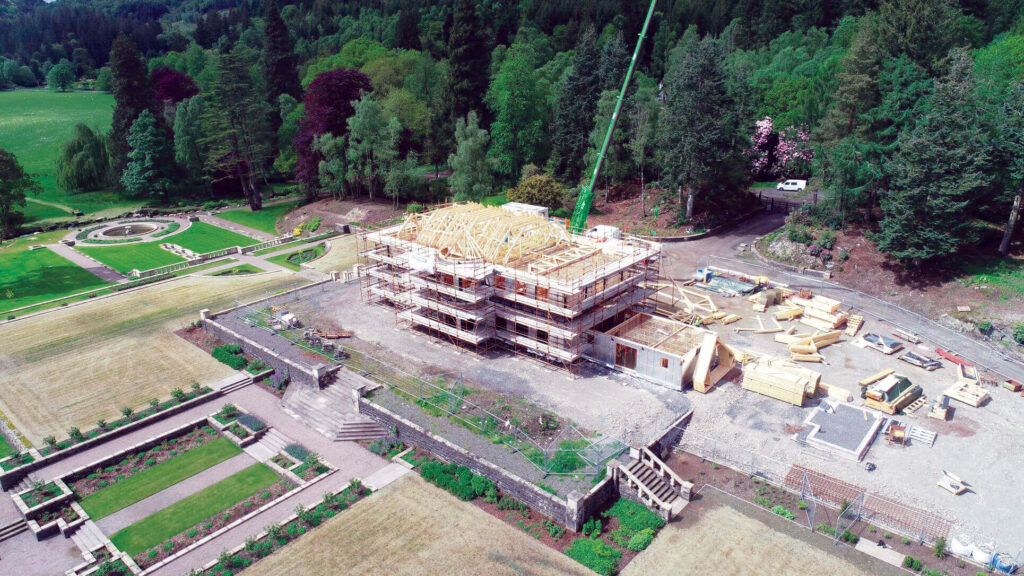
Courtesy of Rob Roy Homes

